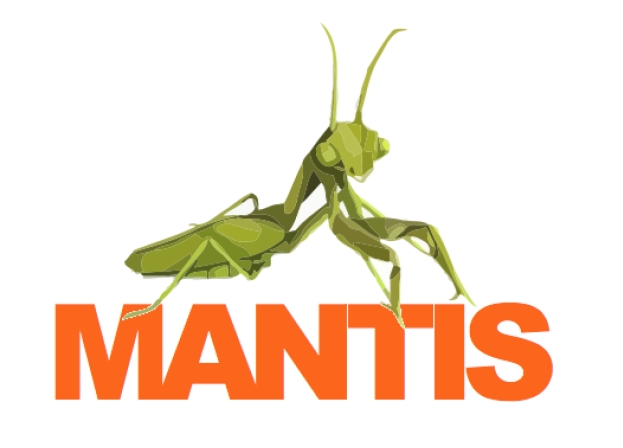
at Artificial Intelligence & Cognitive Engineering (ALICE)
University of Groningen
Dutch | English
The overall concept of MANTIS is to provide a proactive maintenance service platform architecture
based on Cyber Physical Systems that allows to estimate future performance, to predict and prevent
imminent failures and to schedule proactive maintenance. Maintenance is no longer a necessary evil
that costs what it costs, but an important function that creates additional value in the business process
as well as new business models with a stronger service orientation. Physical systems (e.g. industrial
machines, vehicles, renewable energy assets) and the environment they operate in, are monitored
continuously by a broad and diverse range of intelligent sensors, resulting in massive amounts of data
that characterise the usage history, operational condition, location, movement and other physical
properties of those systems. These systems form part of a larger network of heterogeneous and
collaborative systems (e.g. vehicle fleets or photovoltaic and windmill parks) connected via robust
communication mechanisms able to operate in challenging environments. MANTIS consists of
distributed processing chains that efficiently transform raw data into knowledge while minimising the
need for bandwidth. Sophisticated distributed sensing and decision making functions are performed at
different levels in a collaborative way, ranging from local nodes to locally optimise performance,
bandwidth and maintenance; to cloud-based platforms that integrate information from diverse systems
and execute distributed processing and analytics algorithms for global decision making. The research
addressed in MANTIS will contribute to companies' assets availability, competitiveness, growth and
sustainability. Use cases will be the testing ground for the innovative functionalities of the proactive
maintenance service platform architecture and for its future exploitation in the industrial world. Results
of MANTIS can be utilised directly in several industry areas and different fields of maintenanance.
Role of the Artificial Intelligence & Cognitive Engineering Institute,
University of Groningen, The Netherlands (RUG)
Local coordinator: prof. dr. Lambert Schomaker (schomaker at ai.rug.nl, +31-50-3637908)
We will focus on a real-life maintenance problem involving vision and other
real-life sensing, where the problem consists of reducing MTBF for incidents which in the current practice
can only be solved by human operator intervention. Using data collection and user-based ('ipad'-based)
annotation of problem conditions during the industrial process, a continuous learning cycle is initiated.
In the first stage of the project we will focus on forecasting and detection of the problem, using a basic
signalling method. The sensing component ideally focuses on not one but on several possible problem
classes at a sensor location. In the second stage of the project, we will try to actually close the loop
by means of intervention using a modern flexible and cost effective robot systems for solving general
problems, when necessary. Actuators may consist of simple pressured air or magnetic methods for, e.g.,
obstacle removal. The problem-solving system will gradually develop a repertoire of problem conditions and
a probability distribution for corrective actions and their computed applicability (utility values) given the
current context. The proposed solution entails a loose coupling between the production system itself and
the problem solver but a tight description of problem conditions and corrective actions. We will provide
solutions that allow for convenient reconguration and reuse of learned material. Our direct partner is
Philips, who will provide the (warehouse) process data. RUG will implement the pattern matching method
and learning cycle. We will make additional computing resources and storage available on the massive
Groningen high-performance computing cluster.
Consortium
The Mantis project is a 30M€ ECSEL / H2020 project, executed in collaboration with 47 industrial and research partners
over Europe. The principal project coordinator is the University of Mondragon.
Participants
ACCIONA Infraestructuras S.A.,
ADIRA,
AIT Austrian Institute of Technology GmbH,
AITIA International Inc.,
Aalborg University,
Ansaldo STS,
Atlas Copco Airpower n.v. (Flanders),
Budapest University of Technology and Economics,
Consorzio Interuniversitario Nazionale per l'Informatica,
Danfoss A/S,
Fagor Arrasate S. Coop.,
Fortum Power and Heat Oy,
Fraunhofer Institute for Experimental Software Engineering IESE,
Fundacion Tekniker,
Goizper S. Coop,
HBM Hottinger Baldwin Messtechnik GmbH,
Ikerlan S. Coop.,
Ilias Solutions (Brussels),
Innotec,
Instituto Superior de Engenharia do Porto,
Instituto de Engenharia de Sistemas e Computadores do Porto ,
John Deere GmbH,
Josef Stefan Institute,
Lapland University of Applied Sciences,
Mondragon Corporation Cooperativa,
Mondragon Goi Eskola Politeknikoa S. Coop.,
Mondragon Sistemas,
Nome Oy,
Philips,
Philips Consumer Lifestyle B.V.,
Philips Electronics Nederland B.V.,
Philips Medical Systems Nederland B.V.,
Rijksuniversiteit Groningen,
Robert Bosch GmbH,
STILL GmbH,
Science and Technology B.V.,
Sirris c.d.g. (Flanders+Brussels),
Solteq Oy,
Technische Universiteit Eindhoven,
UNINOVA,
VTT,
Wapice,
XLAB,
m2Xpert GmbH & Co KG
Date: Feb. 2015 - Jul. 2018
Researchers at ALICE/RUG:
- Lambert Schomaker (leader)
- Patricia Dominguez Arroyo (semantics, coordination)
- Sheng He (image analysis, root cause analysis)
- Emmanuel Okafor (time series prediction)
- Jos van de Wolfshaar (learning policies,
Mantis supported MSc student conference presentation)
Publications
-
Integrated Dimensionality Reduction and Sequence Prediction using LSTM (2018).
Emmanuel Okafor & Lambert Schomaker, Poster presented at
ICT.Open2018, Amersfoort, The Netherlands.
Abstract
Most industrial or complex processes present temporal dependencies which
stretch over a long time. The underlying patterns in these processes
can be extremely non-linear. Use of linear predictive model
(ARMA/ARIMA) is not suitable in case of nominal codes generated by
assets in a maintenance context. Hidden Markov Models have prediction
limitations when dealing with temporal dependencies that stretch over
long durations. We propose an integrated end-to-end neural-network
approach using a type of LSTM that realizes dimensionality reduction and
pattern prediction in an integrated manner. An important step is the
translation of the arbitrary code set from an industrial asset to a
usable vectorial representation, 'one-hot encoding', addressing the
problem as concerning a bag of words generator. A per-time step
prediction accuracy of 98-99% for code messages generated by the assets
was realized. This research is realized thank to EU/ECSEL project
Mantis.
|
